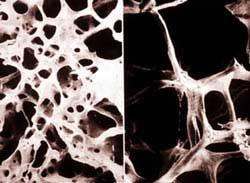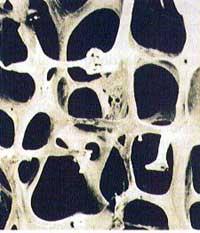Estrogen substitutive protective hormone
2002/10/25 Orobengoa, Olatz - Elhuyar Zientziaren Komunikazioa
To avoid this, they often supply hormones to women. The application of estrogen hardens the bones and decreases osteoporosis. However, estrogen has serious side effects. Several studies have shown that high levels of estrogen significantly increase the risk of developing breast, heart, or pulmonary embolism.

To deal with this problem, the University of Arkansas has invented a synthetic hormone that would only serve to protect the bones and has already yielded good results in rats. The new hormone is called extras and its only function is to control the work of cells that cause osteoporosis.
The bone is formed by cells called osteoblasts and, behind it, other cells called osteoclasts, which pierce bone tissue so that the blood vessels cross the tissue. However, when estrogen levels decrease due to menopause, osteoclasts are more frequent than osteoblasts. Therefore, the osteoclasts consume more than the tissue that produces the osteoblasts and the bone becomes very porous and fragile.
Both estrogen and the synthetic hormone of the extras limit the number of osteoclasts and protect the bone. But estrogen, in addition to protecting the bones, fulfills other functions, so serious side effects appear. For its part, Estren only affects the cells of the bone.
Although trials with rats have been successful, we will still have to wait to see if the same occurs in the human being.

Gai honi buruzko eduki gehiago
Elhuyarrek garatutako teknologia






